| Rye %: | 100% |
| Stages: | Straight dough |
| Leaven: | Instant yeast |
| Start to Finish: | Under 2 hours |
| Hands-on Time: | 20 minutes |
| Yield: | Four 10½ oz/300 g loaves, plus centers |
These Anise-Fennel Loaves were a nice surprise that showed up while I was surfing the web for easy rye recipes. My wife and I were going out that evening, planning to get together with several friends who are regular fans of my rye breads. I didn’t want to disappoint them, but didn’t have the time to produce a full-blown sourdough bread, and this one filled the bill beautifully.
It’s a Swedish bread, whose name, Rågkakor, translates to “Rye Cakes.” (I decided to add the descriptors in order to differentiate these beauties from a host of other breads, rolls and cookies called “rågkakor.”)
In many ways, they’re typical of western Scandinavian ryes – yeast-leavened, sweet, spiced with fragrant anise and fennel, and hydrated with milk rather than water. The dough, despite its 100% rye content, is firm and easy to handle, and the large amounts of syrup and fat call for an equally large dose of instant yeast, which speeds up fermentation. In all, these breads came together in under 2 hours.
Nor was that the only benefit: these mini-loaves boast a tight, cake-like crumb, a sweet-fragrant-buttery flavor profile, and a nutty-spicy, distinctively rye finish. Try them with smoked fish and a glass of chilled vodka or aquavit, or buttered, with a cup of coffee or tea.
Straight Dough:
| Ingredient |
Grams |
Ounces |
Baker’s |
|||
| Medium rye flour or NYB Type 1150 light rye flour |
750 |
26.45 |
100.00% |
|||
| Whole milk, at body temperature (100°F/38°C) |
520 |
18.35 |
69.33% |
|||
| Salt |
9 |
0.30 |
1.20% |
|||
| Instant yeast |
20 |
0.70 |
2.67% |
|||
| Light corn syrup |
75 |
2.65 |
10.00% |
|||
| Unsalted butter, at room temperature (70°F/21°C) |
50 |
1.75 |
6.67% |
|||
| Whole anise seed, 2 tsp. |
4 |
0.15 |
0.53% |
|||
| Whole fennel seed, 2 tsp. |
4 |
0.15 |
0.53% |
|||
| TOTAL FORMULA |
1,432 |
50.50 |
190.93% |
|||
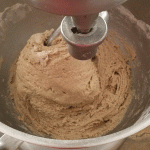 In the mixer bowl, combine the final dough ingredients and use the dough hook at low (KA2) speed to mix until the dough, which will be firm and slightly sticky, partially leaves the sides of the bowl and gathers around the dough hook, 3-4 minutes.
In the mixer bowl, combine the final dough ingredients and use the dough hook at low (KA2) speed to mix until the dough, which will be firm and slightly sticky, partially leaves the sides of the bowl and gathers around the dough hook, 3-4 minutes.
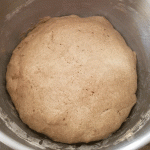 Cover and ferment at room temperature until the dough doubles in bulk and shows broken bubbles and/or cracks in the top surface, about 40 minutes.
Cover and ferment at room temperature until the dough doubles in bulk and shows broken bubbles and/or cracks in the top surface, about 40 minutes.
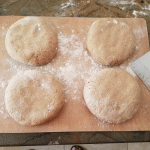 Turn the dough onto a well-floured work surface and use floured hands to knead it back to its original volume. Divide it into four pieces, each weighing about 15 oz/350 g. Shape each into a flattened boule and place onto a well-floured peel, if using a baking stone, or on a parchment-lined sheet pan. Cover and proof at room temperature until the loaves have visibly expanded and the surface shows broken bubbles and/or cracks, 25-30 minutes.
Turn the dough onto a well-floured work surface and use floured hands to knead it back to its original volume. Divide it into four pieces, each weighing about 15 oz/350 g. Shape each into a flattened boule and place onto a well-floured peel, if using a baking stone, or on a parchment-lined sheet pan. Cover and proof at room temperature until the loaves have visibly expanded and the surface shows broken bubbles and/or cracks, 25-30 minutes.
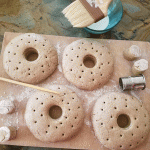 Preheat the oven to 435°F/225°C, with the baking surface in the upper third. Use a fork or chopstick to dock the surface of each loaf thoroughly and evenly to a depth of at least ¼”/0.6 cm. If desired, use a pastry cutter or shot glass to cut a hole in the center of each loaf.
Preheat the oven to 435°F/225°C, with the baking surface in the upper third. Use a fork or chopstick to dock the surface of each loaf thoroughly and evenly to a depth of at least ¼”/0.6 cm. If desired, use a pastry cutter or shot glass to cut a hole in the center of each loaf.
Brush the loaves with milk and bake until the they thump when tapped with a finger and the internal temperature is at least 198°F/92°C, about 20 minutes. Transfer to a rack and cool thoroughly before eating.

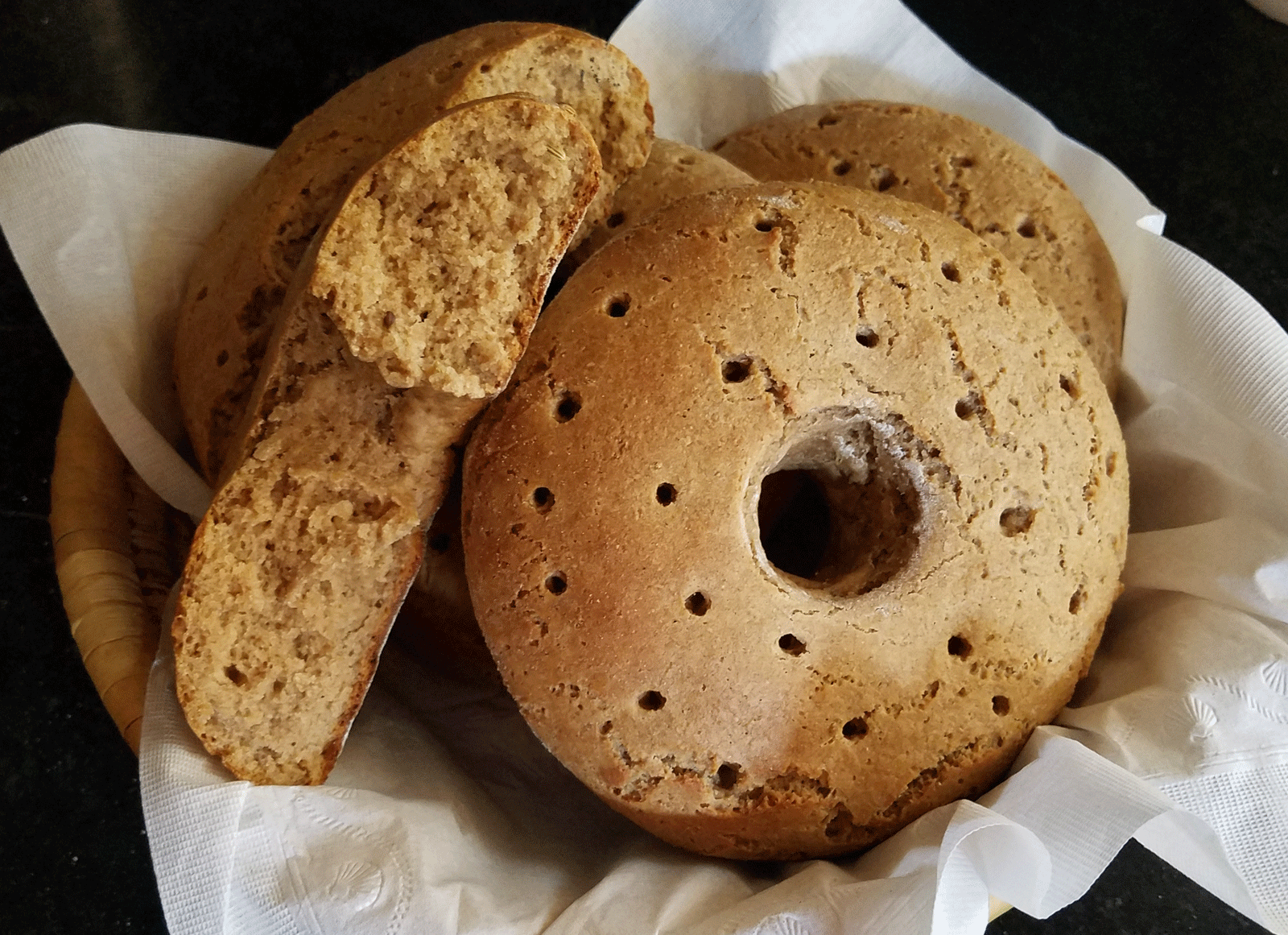

Sigurd Eriksen
August 14, 2017Stan,
A delightfully simple little recipe for accompanying my morning cup of, admittedly, stout coffee. Question; would substituting honey or agave for the corn syrup make the loaves too “sweet”?
Warm regards,
Sigurd Eriksen
Stanley Ginsberg
August 14, 2017Both honey and agave syrup are high in fructose, which has more sweetness than either glucose (corn syrup) or sucrose (refined sugar, Swedish sirap). That said, I’d make the recipe as written, substituting your preferred sweetener, and then adjust to your taste in subsequent bakes. Happy baking!
Diane SF
December 9, 2017I have read conflcting advice regarding scalding milk. what are your thoughts?
Stanley Ginsberg
December 13, 2017I think that scalding milk is a holdover from the days before milk was routinely pasteurized. I don’t think it’s necessary today to the same degree it might have been two or three generations ago, but I do it anyway just to ensure that there are no random microorganisms in the milk.
Nelly
May 10, 2018The whey protein in milk can weaken gluten and prevent the dough from rising properly. Scalding the milk deactivates the protein so this doesn’t happen.
FC Daisy
December 13, 2018The ingredients here are very similar to the Swedish Limpa bread in your Rye Baker book. These have a wonderful shape and faster cooking time than the Limpa.
I just baked your Limpa bread this week, substituting a lesser amount of maple syrup for the light molasses. Another incredibly flavorful rye bread! It was a hit at the holiday party I took it to. And a delicious hit at home where I left the second loaf.
Brian
January 21, 2020Hi, can you tell me what amount of fresh yeast would be used in place of the instant yeast ?
Stanley Ginsberg
February 7, 2020Multiply the instant yeast quantity by 2.5.